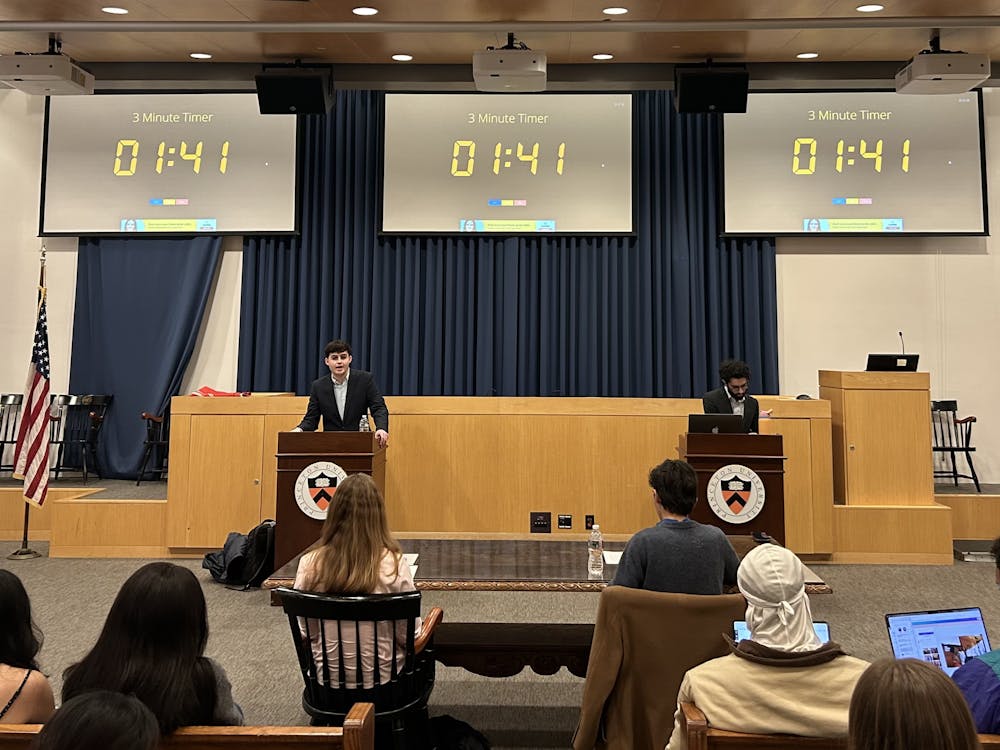Those who arrived on campus by train in recent weeks were dropped off at the new temporary Dinky station, located 1,200 feet south of the old station’s location and over 700 feet south of its future location.
The station’s relocation is currently being challenged by six different pending lawsuits, each of which takes issue with different aspects of the University’s Arts and Transit Neighborhood construction project that prompted the station’s relocation, as well as with different aspects of the project’s current execution.
The construction currently revamping the Alexander corridor is part of the Arts and Transit Neighborhood, a $330 million development that will include several rehearsal and performance spaces dedicated to arts education on campus. It is scheduled for completion in fall 2017.
Once the development is completed, the Dinky will be relocated 460 feet south from the location where it stood from the 1980s until August of this year. During the ongoing construction, the train will stop at the station’s temporary location.
One suit contends that the University does not have the legal right to move the station at all. The University purchased the Dinky station from New Jersey Transit in 1984 and moved it 100 feet southward, according to attorneys representing both sides. But the plaintiff, a local citizens’ group called Save the Dinky, contends that the 1984 contract between the University and NJ Transit does not grant permission for the move.
The contract, according to Save the Dinky, required the University to provide and maintain a station platform of at least 170 feet. The agreement contains a provision allowing the University to “move the existing terminus of the rail line southward coincident with the location of the minimum reservation of platform space.”
Jonathan Epstein, a partner at the law firm Drinker Biddle & Reath, which represents the University in the case, argued that this agreement guarantees it the right to move the Dinky station again, assuming it provides a platform as specified.
The University’s representation brought a motion to dismiss the suit in May, arguing that the passengers didn’t have the standing to challenge the contract, as it was made privately between the University and NJ Transit. A chancery court judge denied this motion in June, ruling that the plaintiffs have the right to bring the case.
The plaintiffs have also filed an injunction to halt construction on the project until the case is decided. The injunction will be heard in Mercer County chancery court on Oct. 11.
This is one of only a few attempts Save the Dinky has made to halt the University’s construction since the plans were announced in 2008. An emergency application, filed on Aug. 23, one day before service was stopped at the old station, was denied.
Another suit challenges the process by which the University acquired zoning and construction approvals from local authorities in the fall of 2011. A small group of local residents, led by Walter and Anne Neumann, has brought a suit against the University as well as the town’s former governing bodies, the Borough Council and Township Committee. As the former Borough and Township officially consolidated beginning in 2013, the newly formed town of Princeton has inherited the legal liabilities of both former municipalities.
The plaintiffs allege that the University essentially paid for the zoning needed to allow the project, according to Bruce Afran, the attorney representing Save the Dinky and who has participated in legal action against the University in the past. The plaintiffs cite a memorandum of understanding which the University negotiated with the Council and Committee in spring of 2011, while the University was in the middle of a long, controversial public battle to get the zoning for the project approved. In that agreement, the University agreed to provide funds dedicated to a study of the community’s long-term transit needs on the condition that the zoning was passed.

The plaintiffs also allege, according to Afran, that the ordinances represent an example of the illegal practice of “spot zoning,” which is when zoning is granted especially to benefit a single entity — in this case, the University.
The case is scheduled for trial in the Superior Court of New Jersey on Sept. 23. Should the suit prevail, Epstein has said the University would appeal the decision. Should the suit prevail in the appellate division as well, the University would seek to have the Princeton Council adopt a new version of the zoning for the project.
In another suit, the same plaintiffs, also represented by Afran, challenge the approval that the Princeton Regional Planning Board granted the University’s site plan for the Arts and Transit Neighborhood, according to attorneys from both sides. The plaintiffs argue that the site plan does not meet the requirements set by the zoning ordinances for pedestrian safety, since it will require pedestrians entering the station to cross a ramp from the Lot 7 garage to Alexander Street, where cars will also be crossing.
Just as the local suits challenging the move have been coming to a head, opponents of the move have also taken the issue to federal regulatory bodies. The New Jersey Association of Railroad Passengers, along with Save the Dinky, is petitioning the federal Surface Transportation Board to declare that it has jurisdiction over the line running from Princeton Junction to Princeton Station, according to Epstein. Should the request be granted, NJ Transit would be required to obtain the board’s approval to relocate the terminus of the line.
NJ Transit’s legal representation declined to comment on the cases.
In another case filed on Aug. 8, Save the Dinky and the NJ-ARP appealed NJ Transit’s determination to transfer a piece of land to the University in connection with the construction project, according to Epstein. The University has not yet decided whether it will become involved in the case as an intervenor and argue in support of NJ Transit.
Yet another legal challenge brought the case to the consideration of the New Jersey Department of Environmental Protection’s historic sites council this summer. Plaintiffs argued that the approval granted by the historic sites council did not meet state requirements, according to Anita Garoniak, president of Save the Dinky.
Because the station was subject to historic site protection, Save the Dinky argues that the NJDEP should not have allowed the University to begin construction under a contract that the NJDEP itself had never reviewed. Requests made for a stay to halt the construction were denied before the NJDEP commissioner on Aug. 29 and before the appellate division on Sept. 6. The appeal of the case is pending.
The suits brought by Save the Dinky are being funded with money raised from supporters. Garoniak declined to state how much the organization has raised.







